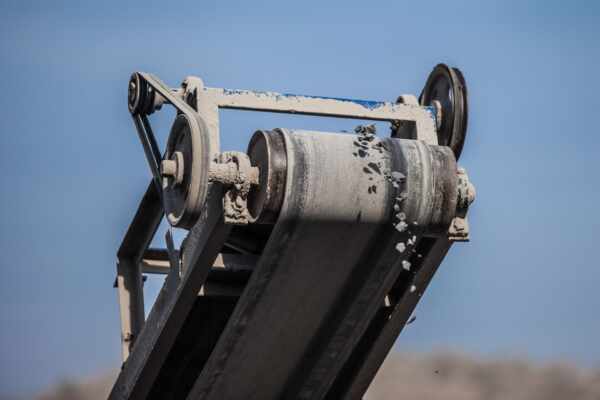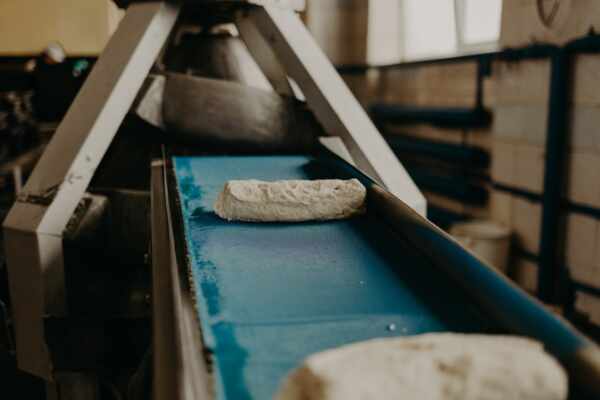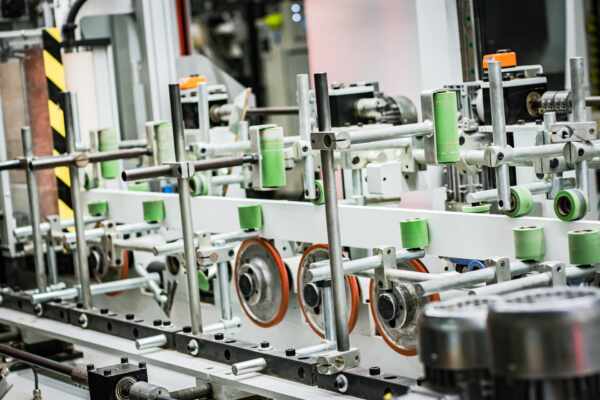As a food manufacturer, maintaining the reliability and performance of your conveyor belt system is of utmost importance for the efficiency and productivity of your operation. Like any piece of equipment, conveyor belts inevitably wear and may require repairs or replacement over time. Determining when to repair or replace a conveyor belt can be a challenging process, but making the right decision is crucial for maximising the longevity and performance of your system, ensuring cost-efficiency and safeguarding food safety standards.
In this insightful guide, we’ll explore the key factors that should inform your decision-making process when choosing between repairing or replacing your conveyor belt. By considering aspects such as the extent and nature of the damage, potential cost implications, and the impact on system performance, you can confidently make an informed decision that optimises your conveyor belt system’s longevity and efficiency while upholding the highest food safety standards.
Assessing the Nature and Extent of Damage
The first step in deciding whether to repair or replace your conveyor belt is evaluating the nature and extent of the damage. This assessment will provide valuable insights into the most appropriate course of action. Consider the following factors:
1. Extent of damage: Minor damages such as superficial abrasions and small cuts might be repairable. However, if the belt is experiencing substantial damage, such as severe cracking, tearing, or delamination, a replacement may be necessary.
2. Operational impact: If the damage hinders the conveyor belt’s performance to an extent that it adversely affects your food manufacturing process, disrupting production and food safety, a replacement may be the best option.
3. Repair history: Consider the repair history of your conveyor belt. If it has been repeatedly repaired for the same issue or if you find yourself needing frequent repairs, it might be time to consider a replacement.
Analysing Cost Implications
An essential factor in deciding between repairing and replacing a conveyor belt is understanding the financial implications of each option. Consider the following aspects when comparing costs:
1. Immediate costs: The upfront expense of the repair or replacement may be the most obvious cost factor to consider. Repairs typically incur lower immediate costs, but replacing the belt may offer long-term financial benefits that outweigh the initial investment.
2. Long-term costs: Be sure to consider the ongoing costs associated with each option, such as additional repairs, potential downtime, and reduced efficiency. Repeated repairs on a problematic belt may ultimately cost more than a one-time replacement.
3. System compatibility: When considering a replacement, ensure that the new belt is compatible with your existing conveyor system to avoid additional costs associated with retrofitting or system modification.
Understanding Implications on System Performance
The performance of your conveyor belt system is a critical consideration when choosing between repair or replacement. Take into account the following performance-related factors:
1. Effect of repair on efficiency: Repairs may temporarily restore functionality, but in some cases, they may compromise the belt’s performance and efficiency, ultimately impacting your food manufacturing process.
2. System downtime: Replacing a conveyor belt may result in longer system downtime compared to repairing the damaged belt. However, the long-term performance and productivity benefits of a replacement may outweigh the short-term downtime consequences.
3. Future maintenance and repair: A repaired belt may require additional maintenance and repair in the future, further impacting system performance. Replacing a problematic belt may increase the overall performance of your conveyor system and reduce future maintenance requirements.
Prioritising Food Safety Standards
In the food manufacturing industry, food safety is of paramount importance. The condition of your conveyor belt system plays a critical role in maintaining these standards:
1. Repair vs replacement: While repairs may be suitable for minor damages, extensive belt damage could threaten food safety and hygiene. In such cases, it may be best to opt for a replacement to ensure ongoing food safety compliance.
2. Regular inspection and maintenance: Regardless of the chosen course of action, it’s crucial to conduct regular inspections and proper maintenance to ensure the highest standards of hygiene and cleanliness.
3. Compliance with regulations: Always ensure that the conveyor belt, whether repaired or replaced, complies with all relevant food safety regulations and industry best practices.
Conclusion
Deciding between repairing or replacing a conveyor belt in your food manufacturing operation is a complex task, requiring careful consideration of factors such as nature and extent of damage, cost implications, system performance, and food safety standards. By thoroughly evaluating these aspects, you can make an informed decision that optimises longevity, performance, cost-efficiency, and food safety compliance.
Are you faced with the challenge of determining whether to repair or replace a conveyor belt in your food manufacturing operation? Contact Change Parts Pty Ltd today. Our conveyor belt company can provide you with supreme-quality conveyor belt products, and unparalleled support that enables you to make the best possible decision for your business and maintain your competitive edge in the ever-evolving food manufacturing sector.




